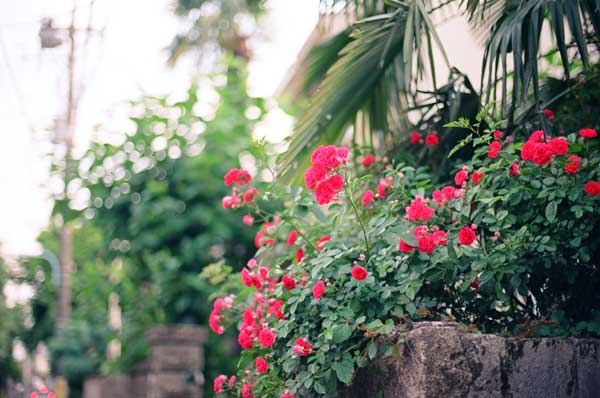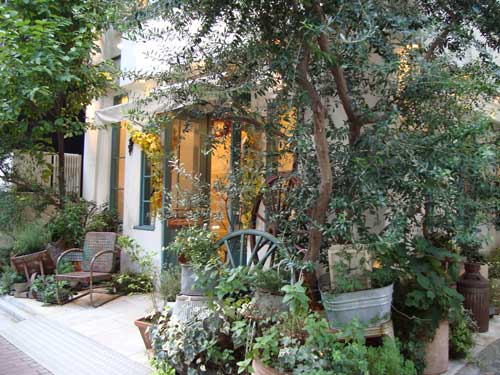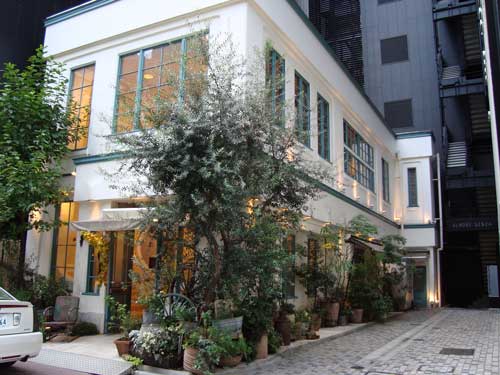
I found this lane when biking home from Koenji. I felt like I was in a small town, many decades ago.


I found this lane when biking home from Koenji. I felt like I was in a small town, many decades ago.


アメリカの大学院に応募する方がこのブログの読者に質問したいそうです:日本の自然とランドスケープ文化の意味について、何かおすすめの学術本がありますか? 私も読者のアイデアを聞きたいです。Image credit: Luis Mendo. From TEDxSeeds プレゼンテーション.
Which books define a Japanese cultural outlook on nature and landscapes? A perspective PhD student wrote to me asking about scholarly works that would allow a comparison with England. Is there a Japanese counterpart to Raymond Williams and William Hoskins, author of The Making of the English Landscape?
I am equally curious to hear what Tokyo Green Space readers know about this topic. So please help this perspective graduate student and share your favorite in the blog comments. Thank you!
はじめまして。
My name is Jennifer Jane Riddle, and Mr. Braiterman has kindly allowed me to introduce myself and use his blog space in order to ask readers about any texts or articles by Japanese authors that address spaces and landscapes in Japan. I am currently applying to various PhD programs in the United States, and my goal is to examine how cultural attitudes towards natural spaces are cultivated and understood and how cultural values affect the way in which countryside spaces are used. Comparatively, I am looking at the countryside of England and English authors, such as Raymond Williams, who wrote about British culture in relation to nature and the English countryside. I am also using more anthropological centered works, as well, such as the landscape histories of William Hoskins. As for works on Japan, I have read Jinnai Hidenobu’s work on Tokyo, and I am looking for similar writers, anthropologists, or theorists who write about Japanese relationships to countryside spaces, nature, and the environment. If anyone who enjoys this blog is aware of any Japanese scholars, past or present, who focus on culture, space and place in such a way, I would love to know more.
どうぞよろしくお願いします。
Image credit: Luis Mendo. From TEDxSeeds presentation.

Recently I took a day trip to Iwaki with my in-laws. We ended the afternoon on the top floor of a 1980s hotel in a cafe which had the clever idea of placing sand on the floor below the tables that face out on the coast. On closer examination, I realized that both the small hill and the seashore are covered in concrete.
The view reminded me of Alex Kerr’s Dogs and Demons about how the institutional forces that lead the government to degrade the countryside and the environment. On the one hand, pouring concrete on the hillside protects the houses below, and presumably what look like huge concrete children’s jacks on the shore prevent flooding. But did they need to build houses on such perilous land, or was the lure of construction profits and kickbacks too great to pass up?

Walking in Tokyo always provides new discoveries. In Ginza, where global brands are housed in tall ultra-contemporary mid-rises, there are still small alleys and two story buildings. I was astounded to stumble upon this bakery housed in what seems the perfect simulation of the French countryside.
When Japanese set out to evoke a foreign scene, it is amazing how many details they add to create the perfect illusion. This bakery, Patisserie Qu’il fait bon, achieves its look with a simple two story structure with plentiful casement windows, a cobblestone driveway, and just slightly excessive exterior lighting. But perhaps even more effective is the landscaping: many layers of plants, all in pots, much like the humble gardens created by older ladies in countless residential streets. What makes this landscape at once bold and persuasive are the many layers, variety of colors that harmonize with the paint trim, and the assortment of metal and recycle wood plants with objects such as a rusted chair, a clock, some farm house wheels, and other bric-a-brac. I like how artfully “untamed” the landscape appears, despite being meticulously staged and styled.
